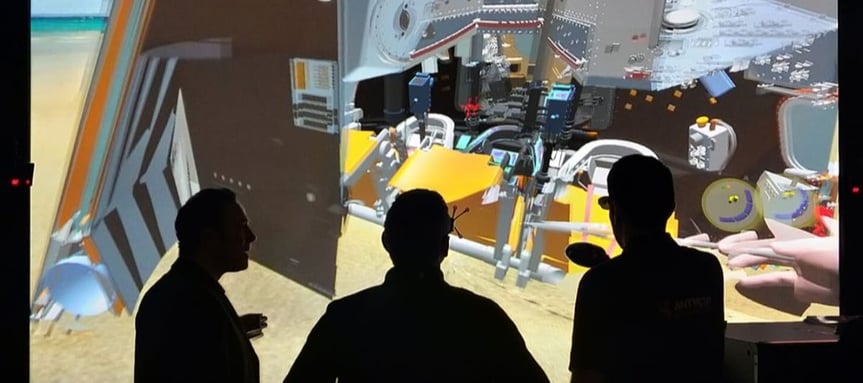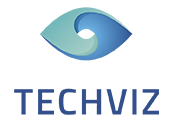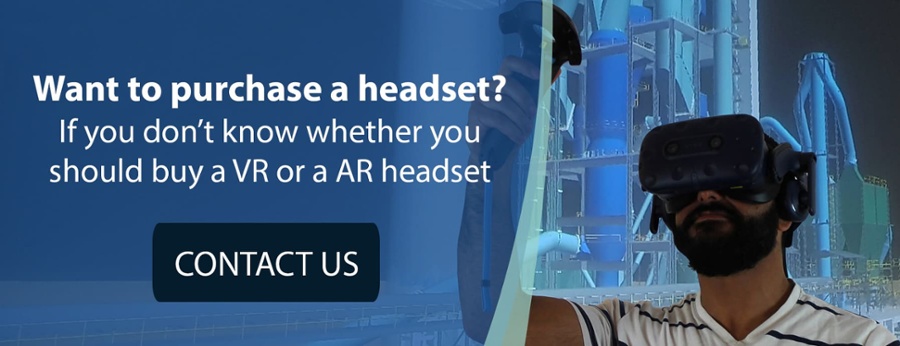
Join us as we dive into the world of virtual reality and explore the insights of John Mould, Commercial Development Manager at Antycip Simulation SAS, a leading provider of technology solutions for immersive projection and display. With over 20 years of experience in the industry and a strong partnership with TechViz, John shares his thoughts on the future of VR and its evolution, from VR collaboration to the adoption of VR in various industries. Get a glimpse of the latest VR trends from this year's Laval Virtual 2019 and discover how VR is changing the game in education, entertainment, and more.
What is your role in the company?
My name is John Mould and I am the Commercial Development Manager for Antycip Simulation SAS working in the Immersive Projection and Display division for over 20 years.
Could you introduce Antycip in a few words?
Antycip Simulation SAS is a pan European organization with three primary offices (France, United Kingdom, Italy) that focus upon Western Europe, although we have often worked internationally due to our partners requirements taking us to these global destinations.
The company started life with a portfolio that was comprised of COTs software tools for training and simulation purposes with value added engineering and when I joined to develop and address more commercial opportunities, we started to see that there was the requirement to add immersive display technologies and image generation hardware to provide more of a solution sale.
So Antycip Simulation has evolved into a technology provider that has expertise in both the software and hardware domains and has put together an enviable portfolio that enables us to address many different markets from Simulation to Virtual reality and more.
What type of partnership do you have with TechViz?
Our partnership with TechViz began with our French office who were the first to provide this technology to our users more than a decade ago. We act as an authorized value-added reseller with exclusivities in our different regional areas. We bring TechViz to our clients to help solve their challenges to get their applications working within our VR displays which can be entry level to high end and super complex but despite the different configurations of the hardware TechViz makes integration easy.
How did this partnership evolve over the years?
The relationship with TechViz is strong and we value the technology being part of our comprehensive portfolio of software tools, it has evolved with our engineers being able to support and integrate the software and with our business development teams being able to open up an increasing number of new opportunities with clients we would normally have struggled to address without this asset.
According to you, how is VR going to evolve? What can we expect in VR in the years to come?
VR is continuing to grow as it is becoming easier with a technology such as TechViz providing such a unique workflow to take a customer’s datasets into a Virtual interactive environment. I think we will see the trend continue for large immerse displays to be adopted by users and the new technologies to leverage collaboration inside such displays. We will also see more users linking virtual environments between physical sites in different geographical locations and between an increasing number of different display technologies. VR will become more user friendly and simpler to adopt into a companies’ workflow and TechViz will be a key part of this future.
I hope that real holographic projection technologies will emerge but we are far from this goal at present.
The entertainment industry will be a key user and I believe for the next generation cinema we will see new ways emerge to feel like we are each having a unique experience and more of a sense of presence than ever before.
Generally, I believe VR will become more of a standard way of working in many different market sectors as the benefits will be as accepted as a must have technology rather than a nice to have capability.
A lot of our customers use TechViz in collaborative projects using our TechViz Collaborative Option. How do you see VR collaboration in the years ahead?
As previously relayed this particular element of VR will continue to grow, reducing travel so organizations can lower their carbon footprints and costs, connecting more organizations together and enabling more users to have a dynamic experience within their virtual datasets. But the benefits are not only limited to commercial and industrial applications as Classrooms of students may be able to transport themselves into historical recreations or to have impossible journeys inside the human anatomy to learn from seeing and experiencing things in a unique manor that makes teaching both enjoyable and more importantly memorable and distance learning may be leveraged in a much more compelling way.
What are the 3 main current trends you noticed here in Laval Virtual 2019?
The three biggest innovations in VR this year are the Multiview 3D stereo, the ultra-short throw projectors and the development of new Mixed reality headsets and other interactive technologies.






 Back to Blog
Back to Blog




